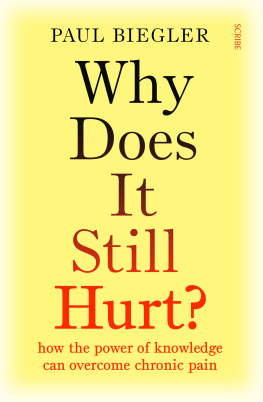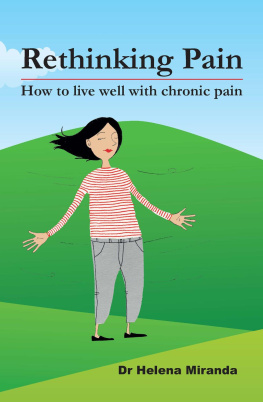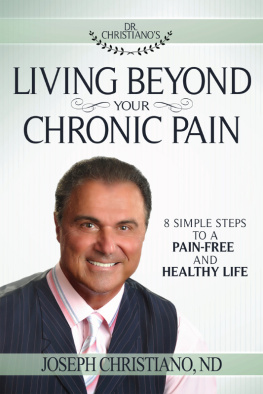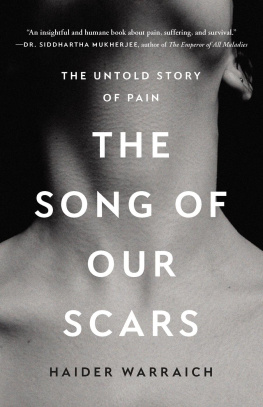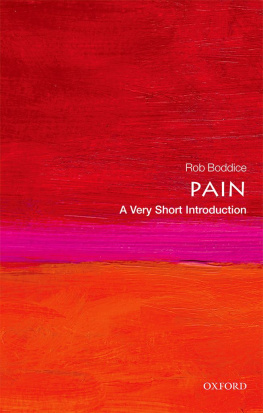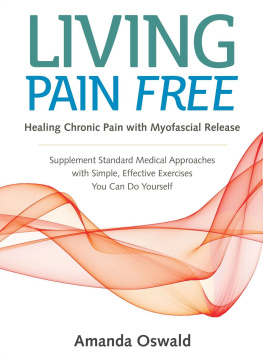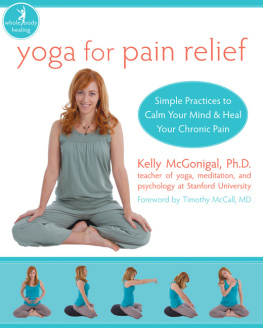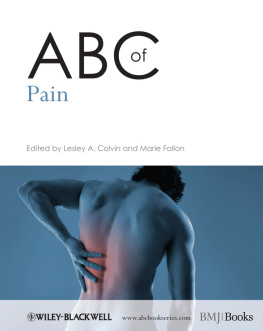Abdul-Ghaaliq Lalkhen - An Anatomy of Pain: How the Body and the Mind Experience and Endure Physical Suffering
Here you can read online Abdul-Ghaaliq Lalkhen - An Anatomy of Pain: How the Body and the Mind Experience and Endure Physical Suffering full text of the book (entire story) in english for free. Download pdf and epub, get meaning, cover and reviews about this ebook. City: New York, year: 2021, publisher: Scribner, genre: Religion. Description of the work, (preface) as well as reviews are available. Best literature library LitArk.com created for fans of good reading and offers a wide selection of genres:
Romance novel
Science fiction
Adventure
Detective
Science
History
Home and family
Prose
Art
Politics
Computer
Non-fiction
Religion
Business
Children
Humor
Choose a favorite category and find really read worthwhile books. Enjoy immersion in the world of imagination, feel the emotions of the characters or learn something new for yourself, make an fascinating discovery.

- Book:An Anatomy of Pain: How the Body and the Mind Experience and Endure Physical Suffering
- Author:
- Publisher:Scribner
- Genre:
- Year:2021
- City:New York
- Rating:3 / 5
- Favourites:Add to favourites
- Your mark:
An Anatomy of Pain: How the Body and the Mind Experience and Endure Physical Suffering: summary, description and annotation
We offer to read an annotation, description, summary or preface (depends on what the author of the book "An Anatomy of Pain: How the Body and the Mind Experience and Endure Physical Suffering" wrote himself). If you haven't found the necessary information about the book — write in the comments, we will try to find it.
Pain is a universal human experience, but we understand very little about the mechanisms behind it. We hurt ourselves, we feel pain, we seek help from a professional or learn to avoid certain behaviors that cause pain. But the story of what goes on in our body is far from simple. Even medical practitioners themselves often fail to grasp the complexities between our minds and bodies and how they interact when dealing with pain stimulus. Throughout history weve tried to prevent and mediate the effects of painwhich has only resulted in a highly medicated population and a booming opiates industry.
Written by a medical expert trained as an anesthesiologist, An Anatomy of Pain is the first book to clearly explain the current issues and complexities surrounding the treatment of pain and how society deals with those in pain, as well as how our bodies relate to pain. Common conception still equates pain with tissue damage but that is only a very small part of the storythe organ which produces pain is the brain. Case studies show that a woman who has undergone a c-section reports dramatically less pain than a patient who has had kidney stones removed in a similarly invasive operation. The soldier who drags himself or herself to safety after being shot deals with pain in a remarkably different way from someone suffering a similar injury on a street. The truth is that pain is a complex mix of nerve endings, psychological state, social preconceptions, and situational awareness.
Filled with case studies and medical history, this enlightening book offers a crash course in all aspects of pain, from chronic to acute, and walks us through the current landscape of pain treatmentsfrom medication (including opioids) to electrical nerve stimulation. Whether its a mild ache or severe discomfort, we all encounter pain in our lives and this splendid bookinformative, empathic, and wiseabout a universal experience will surely promote healing (Booklist, starred review).
Abdul-Ghaaliq Lalkhen: author's other books
Who wrote An Anatomy of Pain: How the Body and the Mind Experience and Endure Physical Suffering? Find out the surname, the name of the author of the book and a list of all author's works by series.

